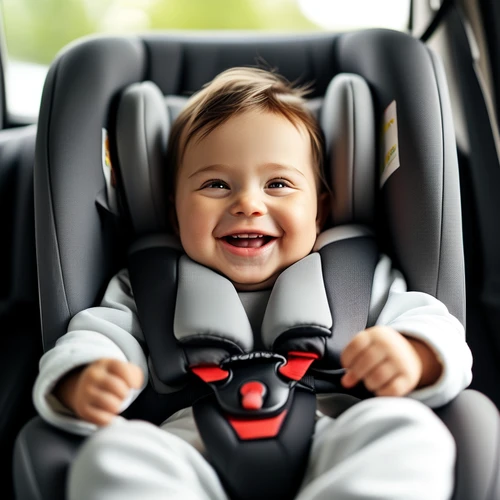Understanding Car Seats:
Car seats come in various types to suit different ages and sizes of children. The primary kinds include rear-facing, forward-facing, booster, and convertible seats. Each serves a specific purpose based on your child's growth stage: * Infant car seats: Designed for babies weighing up to 20-35 pounds. These are typically rear-facing. * Convertible car seats: Can be utilized as both rear-facing and forward-facing, making them suitable for larger or older children. * Booster seats: Used for bigger kids who have outgrown other types of car seats but are still too small to use adult seatbelts safely.The Importance of Car Seat Safety:
The Centers for Disease Control and Prevention (CDC) state that correctly installed car seats reduce the risk of serious injuries by 71% among infants and 54% among young children. However, it's not just about having a car seat; it’s crucial to install them right and use them appropriately. **Rear-Facing Until Age Two:** It is recommended to keep your child in a rear-facing car seat for as long as possible—usually until they reach the maximum height or weight limit set forth by the seat manufacturer. This position provides better support for the neck, head, and spine.Forward-Facing Transition:
Once a child outgrows their rear-facing seat, they can switch to a forward-facing car seat. Typically this happens around ages 2-4. Make sure your kid stays in this type of seat until reaching both height and weight limitations as specified by the manufacturer.Booster Seats for Older Children:
Children should use booster seats once they’ve outgrown their forward-facing car seats but are not yet tall enough to fit into a regular seat belt properly. Boosters help position the seat belt across your child’s chest and pelvis safely, reducing injuries during crashes.Installing Car Seats Correctly:
Proper installation increases safety efficiency: * Always follow the manufacturer's instructions. * Secure the car seat using either the LATCH (Lower Anchors and Tethers for Children) system or seat belts tightly against the vehicle’s seat and back. Leave no more than one inch of movement side-to-side or front-to-back.Car Seat Safety Guidelines
Here are some essential car seat safety tips: * Never place a rear-facing car seat in the front seat; airbag deployment could prove fatal. * Ensure that older children using booster seats fit properly. The lap belt must lie flat across their upper thighs, and the shoulder belt should cross over their chest.The Right Fit is Crucial:
Ensure the harness straps snugly fit against your child's body—no more than one to two fingers’ width between the straps and your child’s shoulders. Chest clips must sit at armpit level to secure your little ones properly during travel. **Conclusion** Car seat safety isn't just a guideline; it's a non-negotiable requirement for safeguarding our children's lives while traveling. Keep up-to-date with regulations, follow installation guidelines diligently, and choose the right car seat type based on your child’s growth stage. Your meticulous attention to these details will make all the difference during an unexpected road accident.

